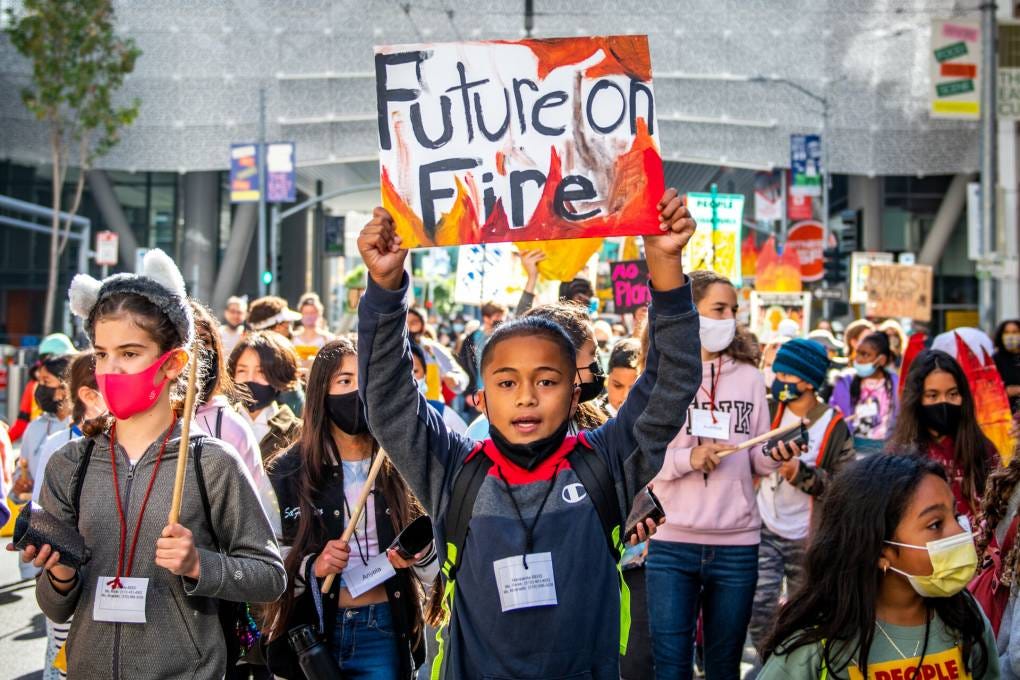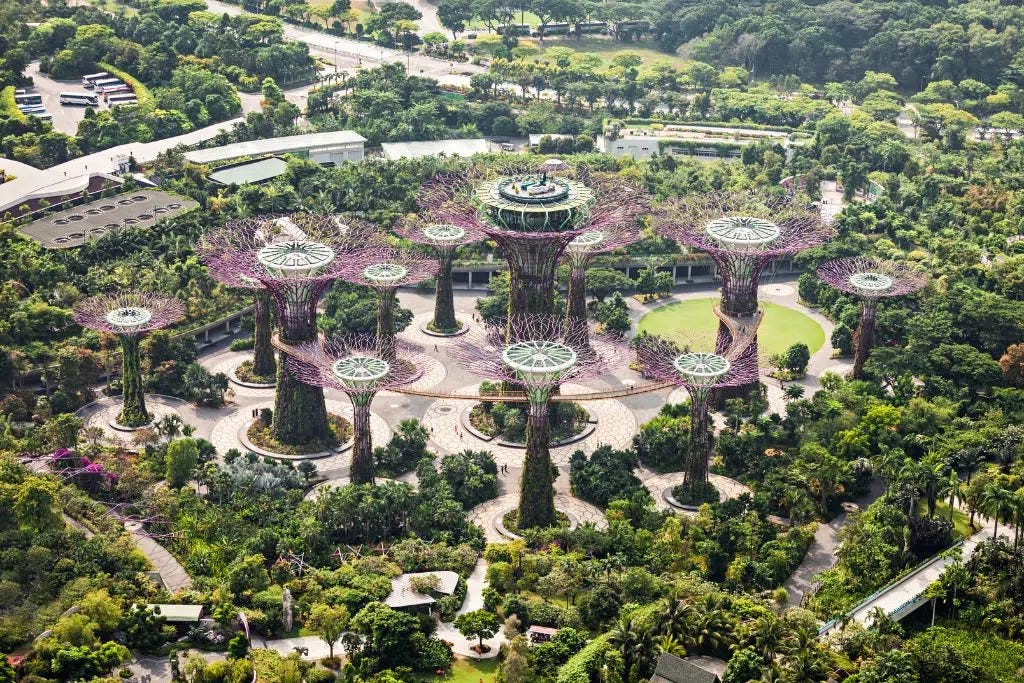Imagine there's no climate chaos. It is easy if you try.
A short note on humanity is a species full of stories and why those stories matter.
If the title of this post resonates with you, that is because I’m consciously echoing one of the best songs ever written, John Lennon’s ‘Imagine’. This simple song challenges us to think bigger and we may have before, and posits the simple but true, realisation that if we all aimed to be better, the world would indeed be better. However, it is when this fluffy imagining hits the reality of human behaviour that it sadly gets harder to remain optimistic. However the power of imagining something beyond what we have now is a gift we all have, and we always will.
This is the point of this article; that the very act of what we think will happen, influences what does. In short, the future that does happen, is influenced by the future we imagine might happen.
(Image - Oct. 29, 2021, as part of a global day of climate action in advance of COP26, the Glasgow climate summit. Beth LaBerge/KQED)
In his brilliant video essay ‘In Search Of A Flat Earth’ Dan Olsen posits that many reactionary movements, such as Qanon, are engaged in a kind of magical thinking - they are attempting to ‘will’ another reality into being. While the unhinged ideas they propagate have not changed the underlying reality, they have (and are) impacting us as they impact the political process.
The future that will happen, is being influenced by the present they imagine happens.
A decade ago a group of Sci-Fi writers, led by Neal Stephenson released a collection of writings, Hieroglyph: Stories and Visions for a Better Future. This was the end-point of a project that was about injecting into the discourse of both Sci-Fi and culture in general, stories that imagined a better future. Sci-Fi is a key genre. Uniquely amongst the forms of fiction, it simultaneously speaks to tensions, hopes and fears in the present and the future. So it is not surprising that it was (and is) easy to find Sci-Fi that is dystopian and/or apocalyptic. Most of it is one or both. This project wanted to posit another, much needed, positive vision of the future:
Neal Stephenson has seen the future—and he doesn’t like it. Today’s science fiction, he argues, is fixated on nihilism and apocalyptic scenarios—think recent films such as The Road and TV series like “The Walking Dead.” Gone are the hopeful visions prevalent in the mid-20th century. That’s a problem, says Stephenson, author of modern sci-fi classics such as Snow Crash. He fears that no one will be inspired to build the next great space vessel or find a way to completely end dependence on fossil fuels when our stories about the future promise a shattered world.
In short, the future that may happen, is influenced by the future we’re imagining right now. So let’s imagine better.
Interestingly Project Hieroglyph emerges around the time another, newer sub-genre of Sci-Fi appears; Solarpunk. Solarpunk is the opposite of Cyberpunk. Cyberpunk is a dystopian future where technology, corporations, pollution and the decay of civil society have resulted in a fractured, predatory, decaying world. A world that has all but eradicated the positive aspects of civilization. Solarpunk imagines one where technology is developed more in harmony with nature and our civilizations evolve to bolster the best angles of our nature. These two similar forms are not coincidental: Stephenson is thinking about what would become Project Hieroglyph around 2011 while the term ‘Solarpunk’ is coined around 2008 and one of Solarpunk’s thinkers, Adam Flynn, would contribute to Project Hieroglyph. (There is also ‘Cli-Fi’, an emergent subgenre looking at climate fiction)
(Image, a Solarpunk future. Source)
In short, the future that does happen, is influenced by the future we imagine might happen.If we imagine better, we may get a better outcome?
This brilliant video essay by Simon Clark does just that. It is fiction, yes, but it is a believable imagining of a world where we do meet the climate crisis - and win.
This is not the only fiction that does - The Ministry for the Future by Kim Stanley Robinson is a brilliant novel that also imagines us rising to meet the challenge. It does so using Robinson’s trade-mark style of excellent writing combined with thorough scientific and technical knowledge plus astute political understanding.
We need to have hope, because without it, it is hard to see how we can prevail when faced with the monumental political and technical challenge of stopping climate chaos. Hope is the beacon guiding us though the dark. If we can imagine futures where that does happen, it becomes more likely that one will. The make the beacon a bit brighter.
That is not to say that we don’t need to do the work, alongside the imagining, because we do. We really do. It is just that I think we can get there.
Sure, you may say I'm a dreamer. But I hope I’m not the only one.





